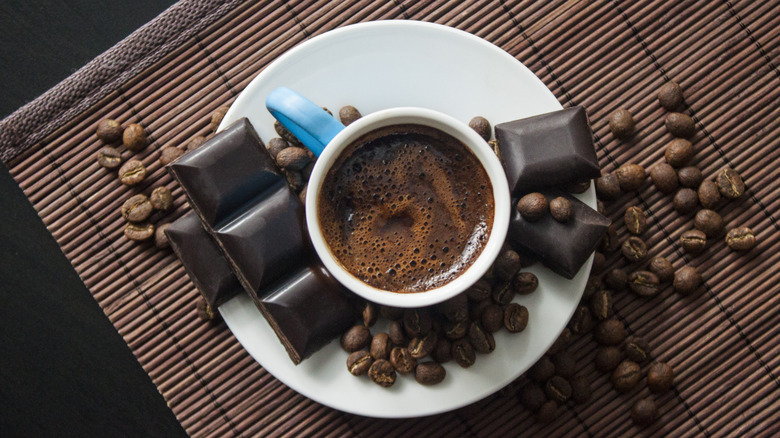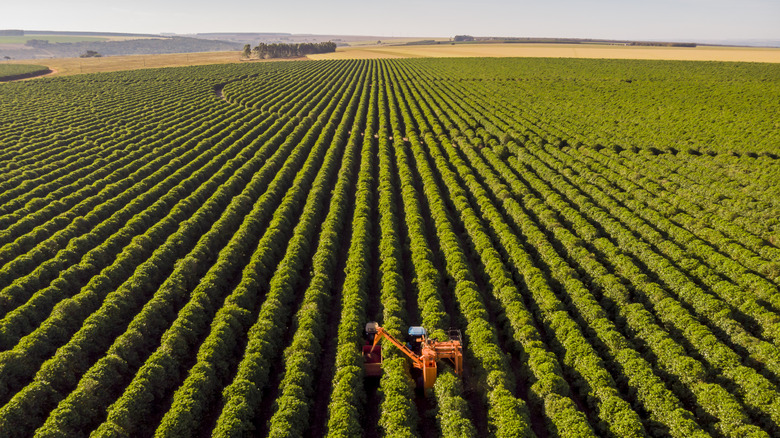The Reason Coffee And Chocolate Make A Heavenly Match, According To A Master Chocolatier
Coffee and chocolate make a heavenly match — you don't have to taste it to believe it, although you should. A tablespoon of coffee or ground espresso in your chocolatey baked goods will make them taste noticeably richer, while a touch of chocolate flavor in your coffee drinks will cut through the bitterness of the beans, allowing other, more nuanced flavors to shine through. The two bring out the best of each other, but why? If anybody knows, it's Nicole Patel, the Owner and Chocolatier of Delysia Chocolatier in Austin, Texas.
"Chocolate and coffee thrive in similar regions, forming what is known as the 'bean belt' — an area around the equator with ideal humid conditions and required rainfall for cultivating both plants," she explains to Tasting Table. "The processing of the beans, growing conditions, and the terroir of the land can all be tasted in both coffee and cacao beans."
While this means the two crops face similar challenges relating to sustainability — often dawning the same sustainable labels on their packaging — it also means they're influenced by the same terroir. In so, coffee and chocolate are almost predestined to complement one another. That destiny, however, isn't solely written in the soil where they grow — it's also curated through the similarities in harvesting and production processing the two crops share, particularly in the initial stages of cultivation.
A match made in the bean belt
Although coffee and cacao are two distinct crops, harvested from two different plants to produce two different things, Patel told Tasting Table that they share a lot of similarities. Beyond being tropical plants that thrive in the same climate, Patel shared that coffee and cocoa are both harvested from what are known as perennial plants: Coffee from the Coffea plant and cocoa from the Theobroma cacao tree. Both require manual labor to harvest, meaning the farmers pick them by hand. From there, the similarities only continue.
"Both coffee and cacao undergo fermentation after harvesting," says Patel. "For both beans, fermentation helps develop the flavor characteristics." Following fermentation, both undergo a period of roasting at specific temperatures and durations — a crucial step for developing flavor characteristics and bringing out desired aromas. From there, Patel says that the coffee and cocoa processing steps diverge significantly. Coffee beans are brewed and drank, while cocoa beans are ground and conched to make chocolate.
As two beloved products on their own, coffee and chocolate couldn't appear more different. But the similarities demonstrated across their life cycles — from the terroir they share to processes of fermentation and roasting — only show that the two were made for each other. According to Patel, that goes for any style of coffee or flavor of chocolate. Whether it's white chocolate and robust coffee or Delysia's cherry chocolate truffles and espresso, the two are a match made in heaven — or the bean belt.

